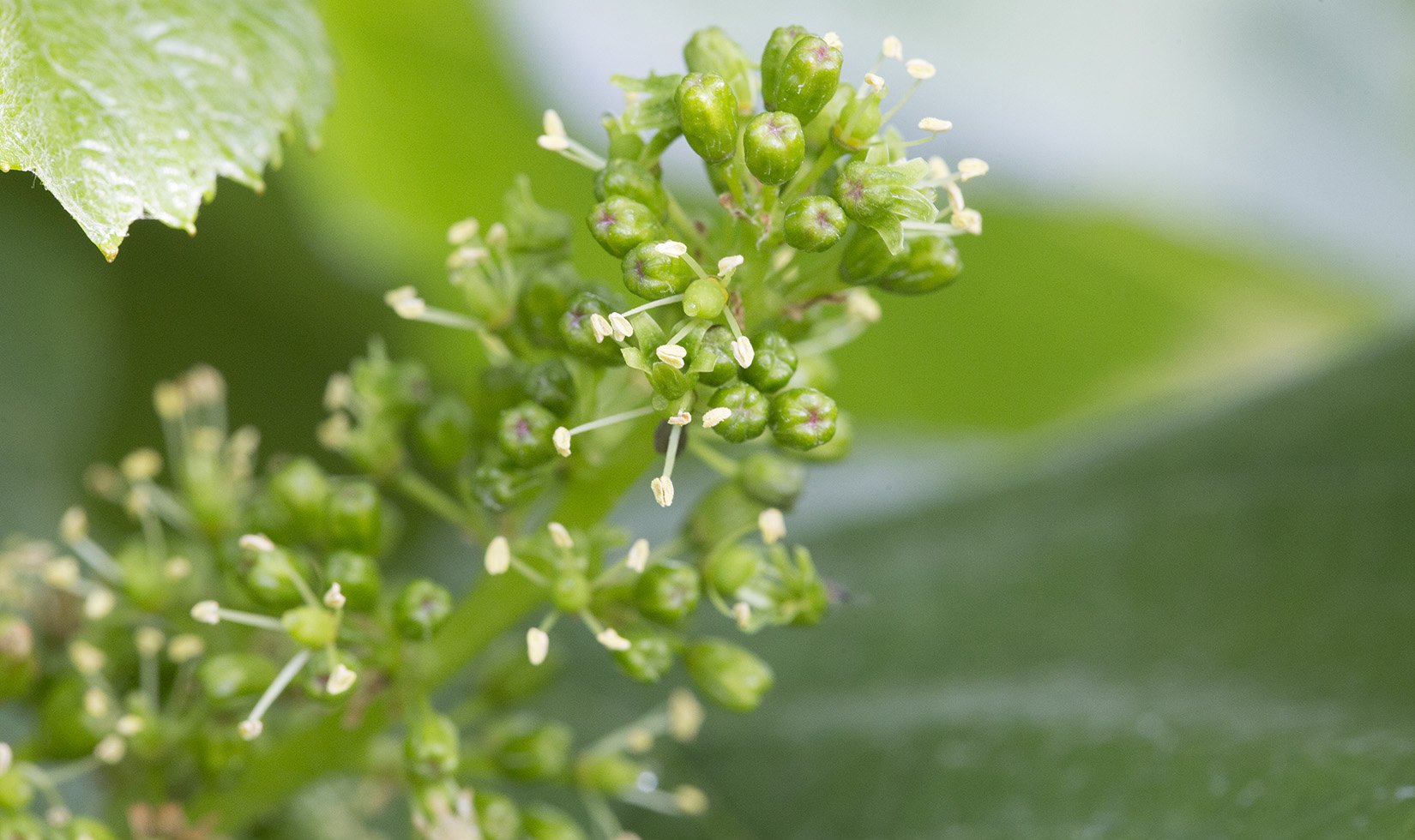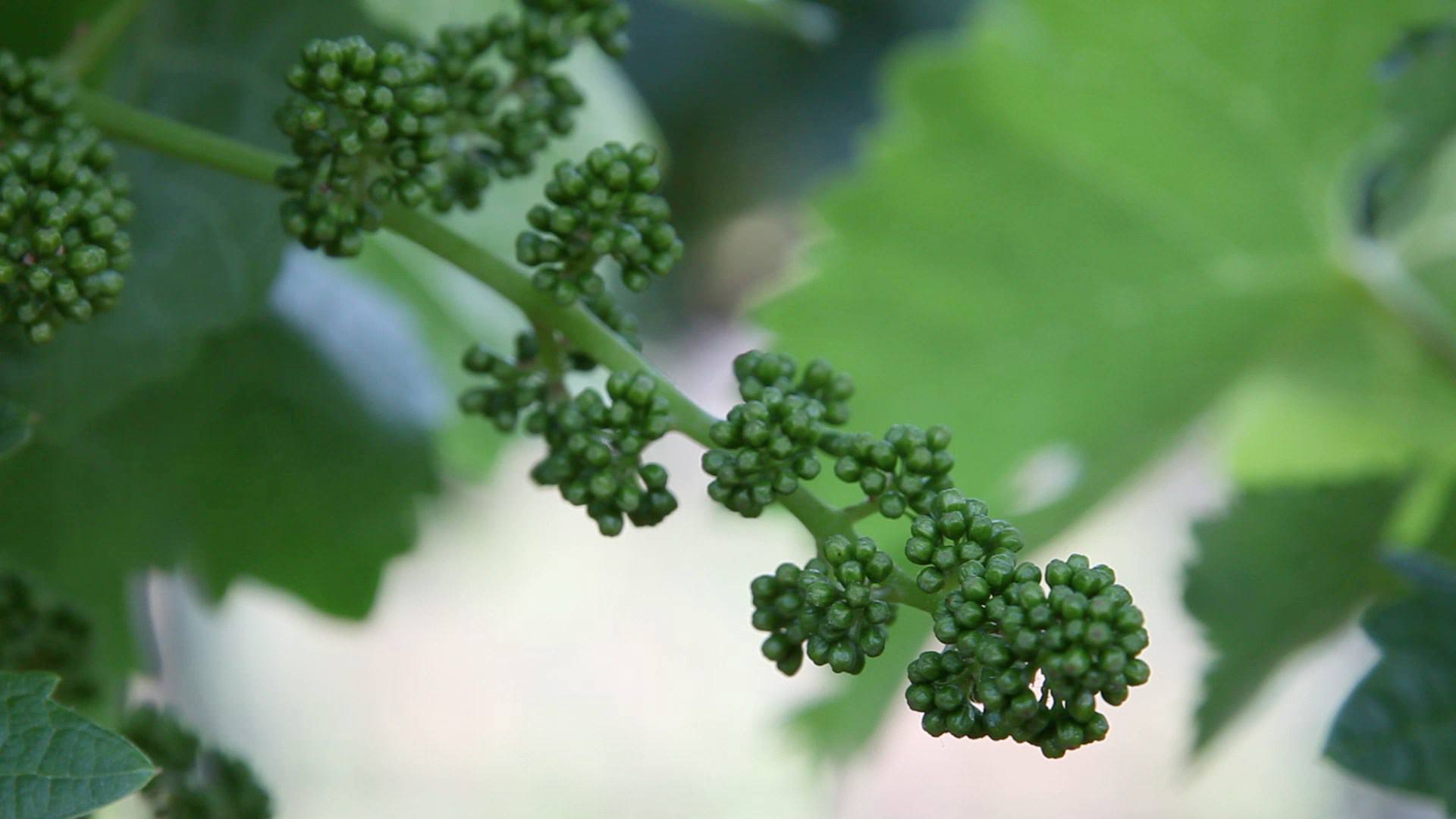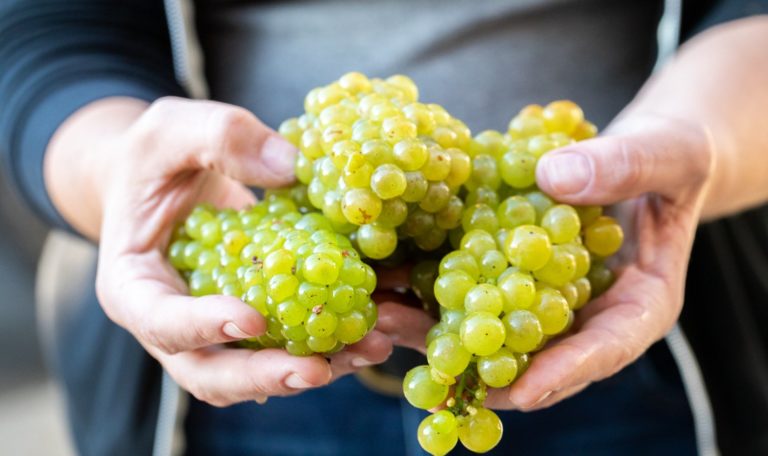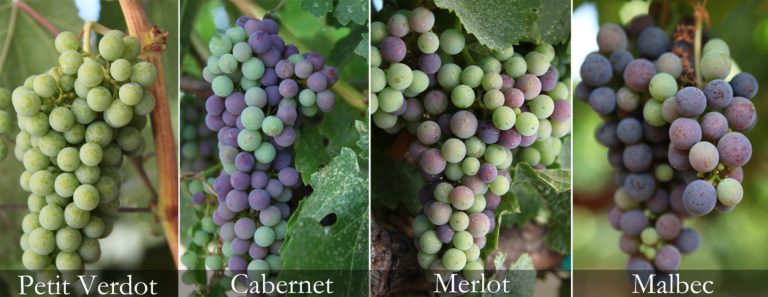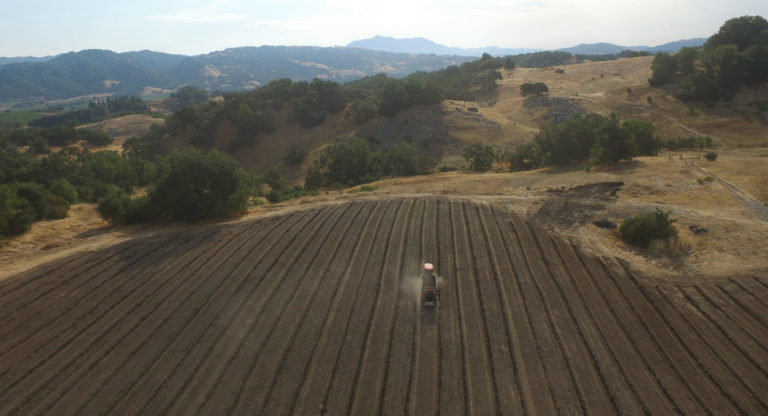In the world of grape growing and vineyard management, the abundant fall harvest is generally what springs to mind. But the stages leading up to this yearly bounty are crucial factors to success. Grape flowers, or grape “flowering” in vineyard manager parlance, arrive in late spring, 40-80 days after bud break, depending on the temperatures and rain. To make their welcomed appearance, grape flowers need average daily temperatures to stay between 59-68 degrees Fahrenheit, generally sometime in May in Sonoma County. It’s during this stage of a grape’s lifecycle that pollination and fertilization occurs, with the results ultimately producing a cluster. To learn more about how spring weather influences bloom and fruit set, watch this fruit set video.
For fertilization to occur, unlike many other plants, the bees don’t have to buzz in the vineyards. Grapevines are hermaphroditic – they possess both male and female parts so, barring weather issues or pest invasions, grape flowers can transform into berries all by themselves. Read more about this process and the geeky science behind flowering.
Pre-flowering Grapes: The Calyptra
During the period of rapid shoot development, the branch system of the cluster, termed the “rachis,” can be observed extending from the lower portion of the new shoots. Although at first it may appear that little baby grapes are forming at the tips of the rachis (kind of like miniature corn), these little green cases are actually the flower parts protected by five, shell-like petals that are fused into a unified enclosed structure called the calyptra. Inside of the calyptra under each of the five petals is a developing stamen—male part—consisting of an elongated filament with two pollen sacs at the end. These five stamens surround the pistil—female part (hmm, quite similar to human behavior)—composed of the ovary, style and stigma. As the pollen at the tips of the stamens and the eggs in the ovary mature nearly simultaneously, the five petals of the calyptra will release from the bottom and curve outward and upward, eventually drying and falling off.
Grape Flowering: Pollen Releases
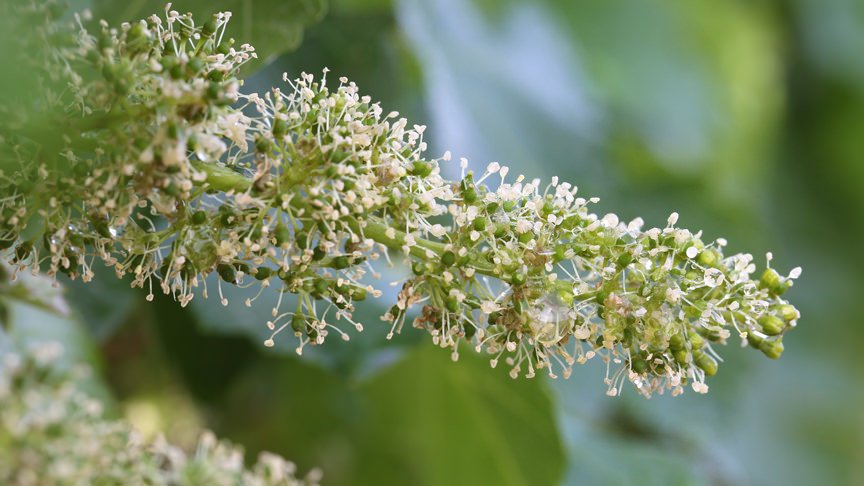
This shedding of the calyptra also causes the pollen sacs to rupture and release thousands of pollen grains that will land on the stigma underneath. Usually within two to three days, pollination will reach completion with the fusing of a single sperm with the egg, and the first stage of berry development begins with cell division. Typically, a 30% success rate for the cluster is considered good. If every flower turned into a berry, that would be one problematic, crowded cluster.
What Can Affect a Grape Flower?
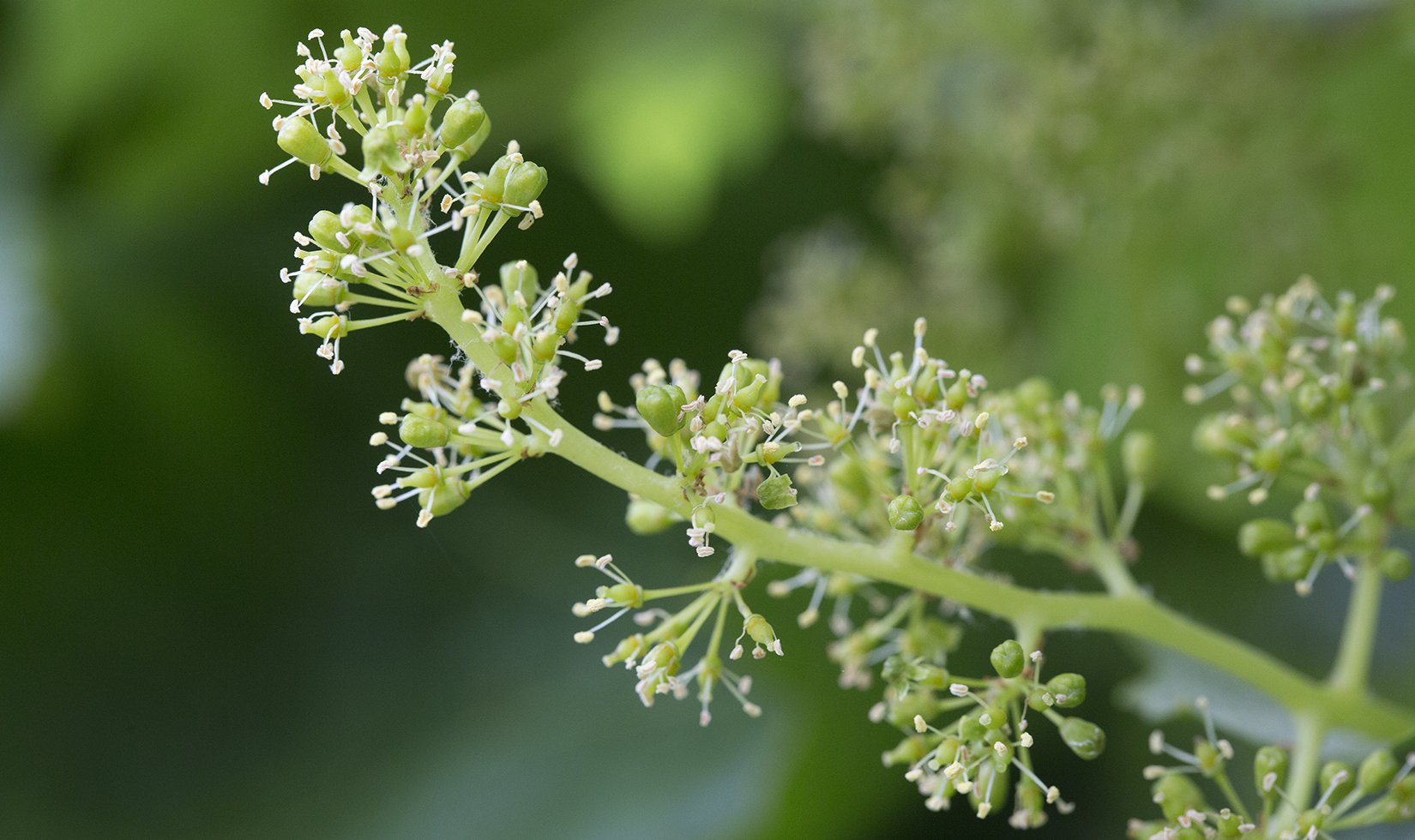
Every vineyard manager wants an even fruit set, defined as when the fertilized flowers develop into a grape and then into picture-perfect clusters. But if the delicate grape flowers are exposed to rain, wind or cold temperatures, the dream of a beauty-pageant cluster can be dashed. Low temperatures can freeze the flowers or a heavy rain can wash them off. This unwanted result is called “shatter,” meaning the cluster grows without the ideal, tight shape with the berries differing in size. While this variation thankfully doesn’t affect the quality of the berries, it definitely affects their quantity. This article offers a photo gallery of various fruit sets and what a shattered cluster looks like.
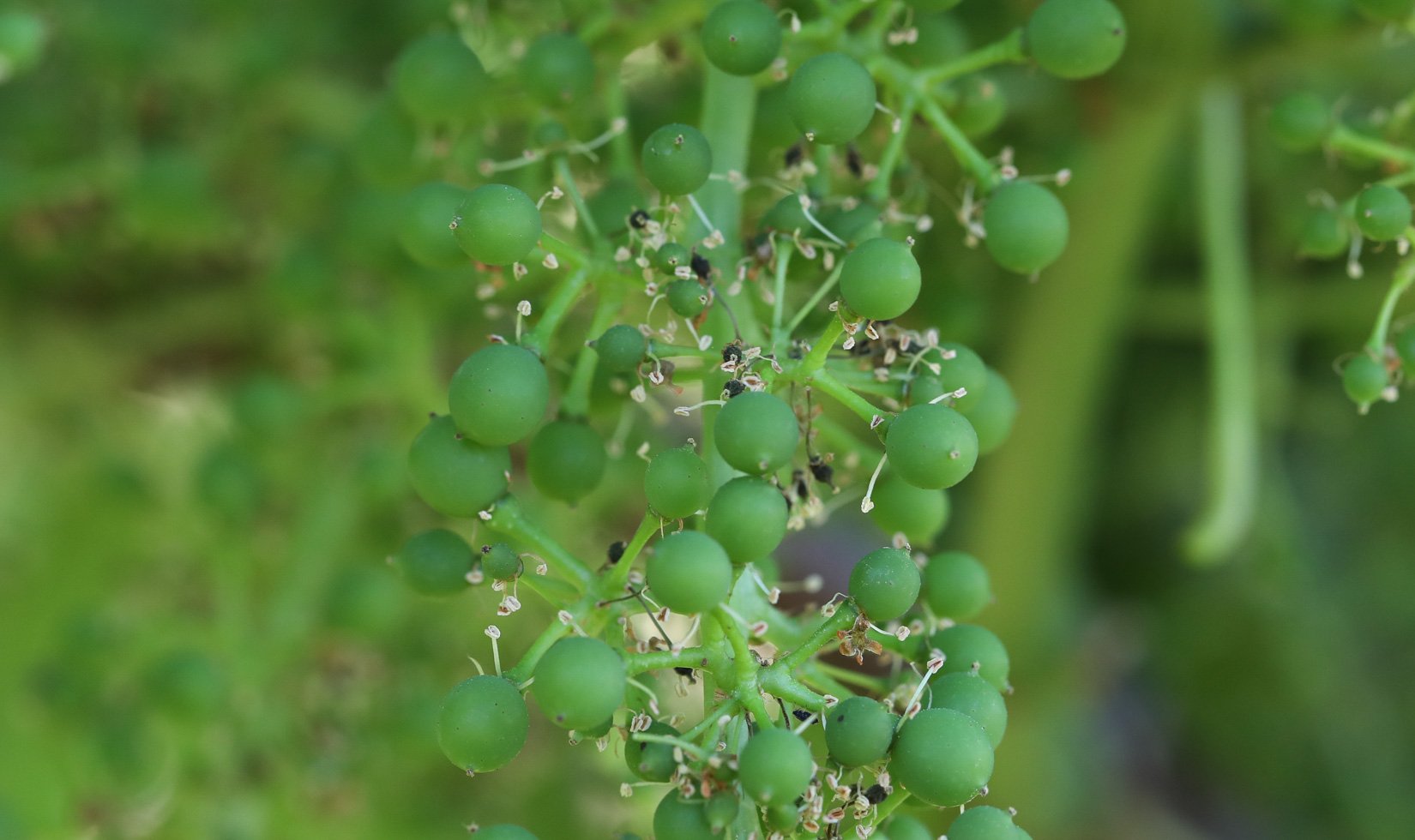
Once the tiny berries appear, we begin our leaf pulling or thinning practice. This crucial activity allows for increased air movement within the vine’s canopy, as well as helps manage light penetration through the vines. The breezes help keep non-beneficial pests at bay and the dappled light helps prevent sunburned grapes which can negatively affect a wine’s flavor. To learn more about our leaf thinning program here at Jordan, watch this video: Leaf Vineyards to Prepare Grapevines for Ripening.
With the right practices and if Mother Nature cooperates, grapevines thrive, especially in the temperate and normally predictable weather of California. We’re fortunate to grow vineyards here but we pay a lot of attention to everything to maintain the highest quality standards. We know it shows in the bottle.
